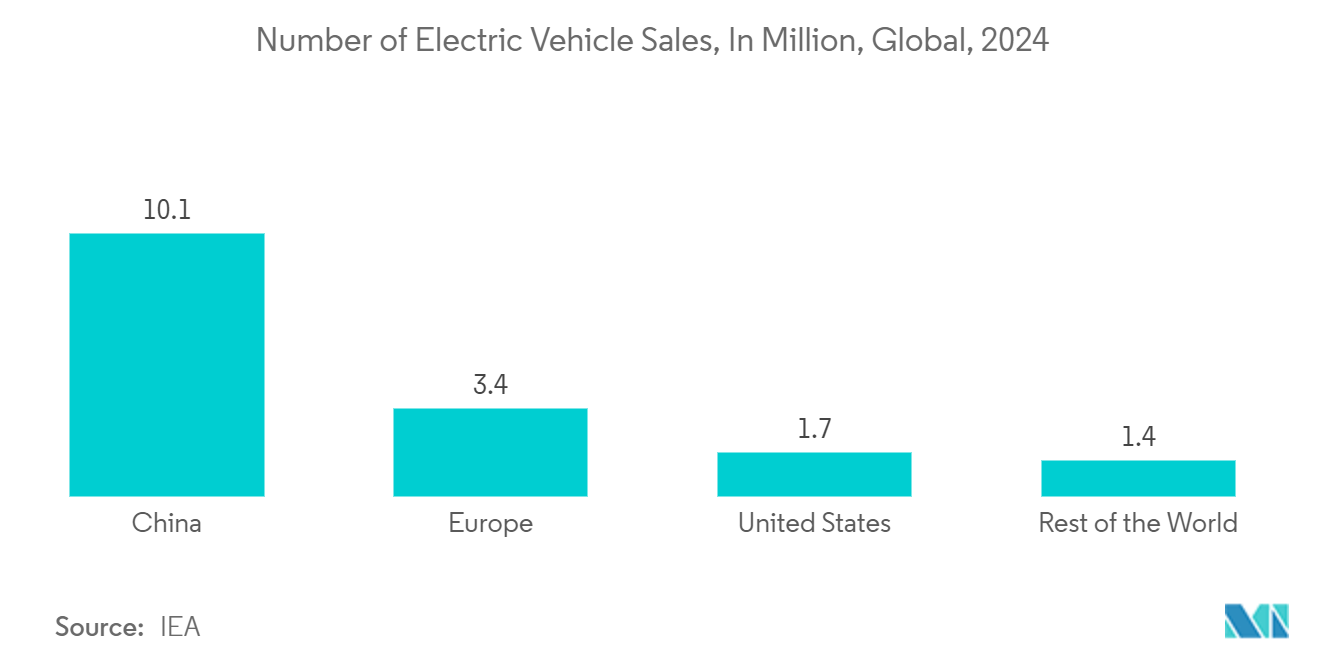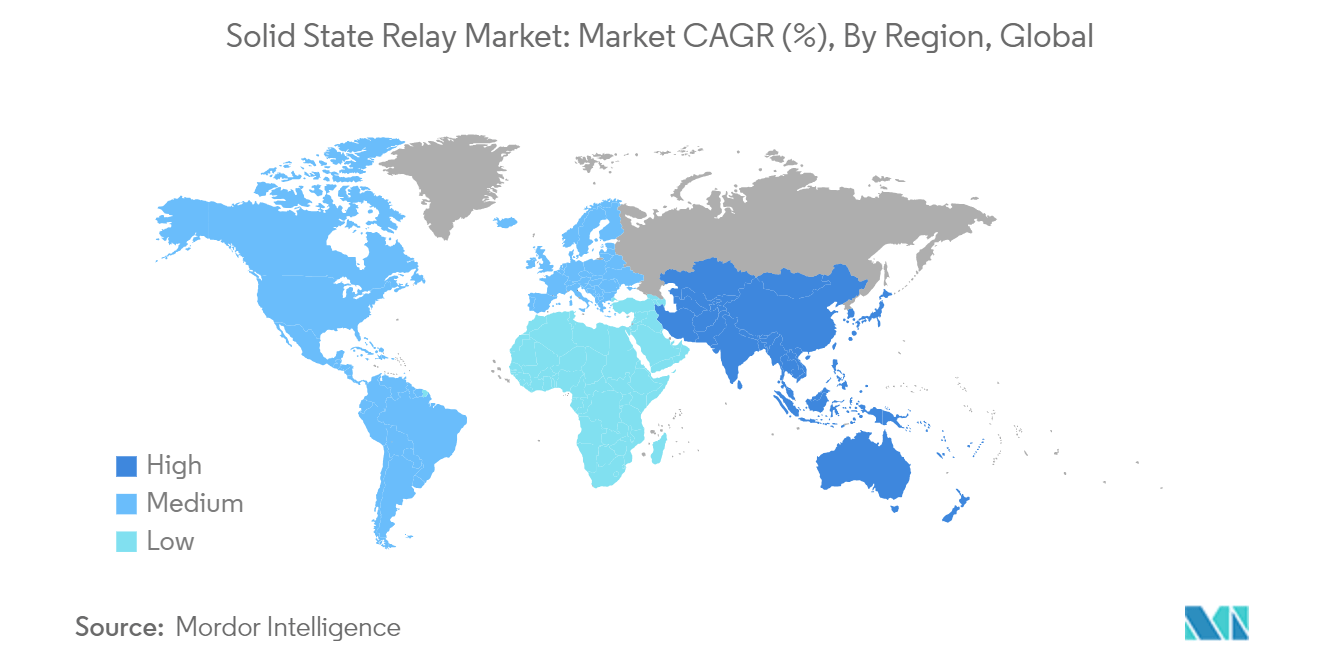Market Trends of Solid-state Relay Industry
Automotive and Transportation Segment to be the Fastest Growing Application
- Solid-state relays are employed in automotive systems for power distribution and motor control functions. They provide reliable switching for components like turn signals, windshield wipers, and cooling fans. These relays can handle high currents and offer fast switching, making them suitable for automotive applications.
- Solid-state relays play a crucial role in the power electronics systems of electric vehicles. They are used on battery management systems, motor control units, and charging systems. These relays enable efficient and reliable switching of high-voltage and high-current circuits in EVs.
- The growth in the electric vehicle markets, especially power trains, is further expected to increase the demand for solid-state relays. Electronic components in the automotive industry are critical for safety and are subjected to extreme voltages and environmental conditions. This has driven the manufacturers to develop a new line of solid-state relays for automotive applications.
- The factors driving the growth of the SSRs include increased vehicle production and rising demand for electric vehicles. In addition, several technological advancements, such as the implementation of IoT and favorable government standards for the production of autonomous, connected, and low-emission vehicles, are further fueling the market’s growth of solid-state relays during the forecast period.
- For instance, in May 2024, NOVOSENSE announced the launch of its new NSI7258 series of capacitive isolation-based solid-state relays, available in both industrial and automotive grades. Designed specifically for high-voltage measurement and insulation monitoring, NSI7258 provides industry-leading voltage withstand capability and EMI performance to help improve the reliability and stability of high-voltage systems such as industrial BMS, PV, energy storage, charging piles, and BMS and OBCs for new energy vehicles.
- According to IEA’s Global EV Outlook 2024, in 2024, electric car sales in the United States are projected to rise by 20% compared to the previous year, translating to almost half a million more sales relative to 2023. Based on recent trends and considering that tightening CO2 targets are due to come in only in 2025, the growth in electric car sales in Europe is expected to be the lowest of the three largest markets. Sales are projected to reach around 3.5 million units in 2024, reflecting modest growth of less than 10% compared to the previous year. Such trends are creating a demand for solid-state relays over the forecast period.

Asia Pacific Expected to Witness Significant Growth
- The application field for solid-state relays has significantly broadened recently. Solid-state relays have no moving parts, reducing wear and tear and increasing reliability and longevity. This is particularly important in the automotive sector, where components are subjected to constant vibrations and harsh conditions. Solid-state relays offer faster switching speeds than electromechanical relays, improving the performance of various automotive systems, including ADAS, power distribution units, and battery management systems in EVs.
- China's market growth is poised to be significantly driven by the automotive sector. The surging demand for solid-state relays within automotive manufacturing primarily fuels this surge. For instance, in January 2024, the China Association of Automobile Manufacturers announced a significant achievement for the country's auto industry: production and sales have surpassed 30 million units annually, highlighting the immense growth opportunities in the sector.
- In addition, China emerged as a significant player in the hybrid and electric vehicle market, propelled by its ambitious target: achieving a 40% share of electric vehicles in total car sales by 2030.
- Japan's automotive industry, including the growing electric vehicle (EV) market, is a significant driver of solid-state relays. These relays offer high reliability and efficiency and are used in battery management systems, power distribution, and various vehicle control systems.
- Japan's automotive sector, which historically contributes to over 89% of the nation's GDP, is undergoing a significant shift. Driven by Japan's ambitious targets of achieving net-zero emissions by 2050 and a 46% reduction by 2030, electric vehicles (EVs) are gaining traction. In line with this, the national government has outlined clear targets: aiming for EVs and plug-in hybrid electric vehicles (PHEVs) to constitute 20-30% of passenger car sales by 2030, with fuel cell vehicles (FCVs) targeted at 3%.
- India's rapid infrastructure development, including smart cities and modern transportation systems, boosts the demand for solid-state relays (SSRs). The SSR's reliability and ability to manage high-voltage applications are essential in these projects. For instance, in February 2024, the Indian parliamentary committee underscored the importance of initiating the subsequent phase of the government's primary Smart Cities Mission, focusing on tier-2 cities within a 100-kilometer radius of state capitals.


